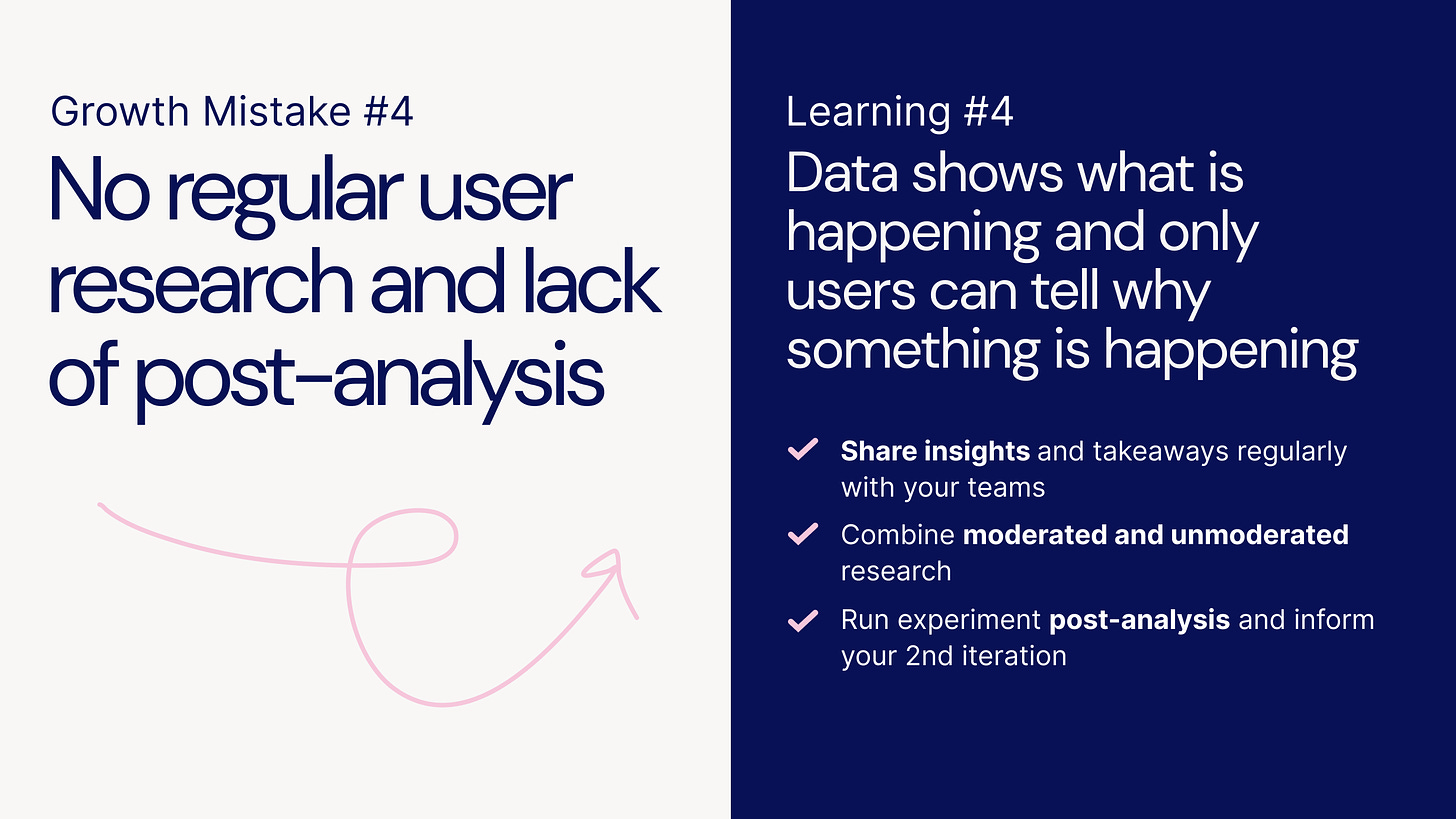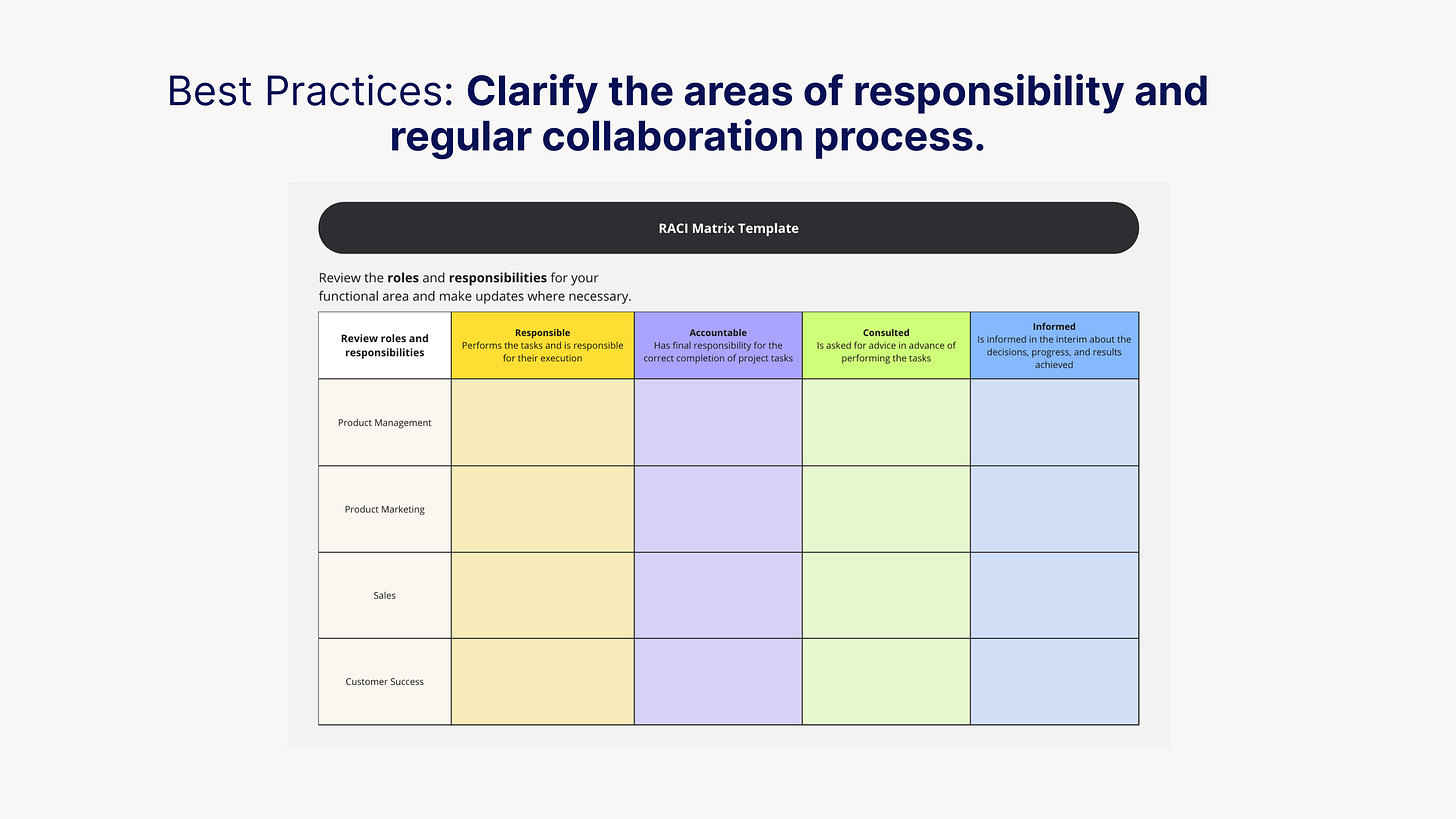Navigating Key Growth Mistakes through the Lens of User Onboarding
5 mistakes, learnings, and bonus for Self-Service Onboarding course 🎁
This post is supported by Appcues — make your product adoption easy!
Appcues created the Product Adoption Academy to help you level up your product adoption — check out the “5-step Growth Flow Review” template which I created to help companies connect growth hypotheses with behavioral patterns to uncover meaningful improvements. Find an example of Dropbox Onboarding inside the template and apply it to review any growth flows: appcues.com/growthmates
While I’m traveling across Japan 🇯🇵, I want to share some insights from the webinar we hosted a couple of weeks ago together with
(Growth Advisor, ex-Miro) and a special guest (Product Leader at Digible, ex-Coda).⏯️ If you’d like to get a video recording of the full webinar — leave a comment for this post, and we will share the link directly.
A statement before we dive into the post: User onboarding is a key product experience and the basis for your product growth. Not being approached well, it can cause problems and risks for the entire Growth system — Acquisition, Retention, and Monetisation. This is why we also decided to create a Self-serve Onboarding course and guide you through creating your product's holistic Onboarding and Activation experience. The course starts on the 15th of April, and there’s still a chance to join this cohort.
So now, let’s dive into 5 mistakes and key learning 👇
🔴 Mistake #1. Lack of Clear Product Value Communication
The main purpose of any product is to deliver on its value promise. This value promise is the core of the product positioning, differentiator, and lies in the aha-moment definition. However, User Onboarding starts way before the first session with the product — it starts from the search for the solution of the problem. This is why a lack of clear, concise, and consistent communication of the product value on the website, sign-up journey, and lifecycle emails can lead to misleading expectations from the product and early churn.
✅ Learning: Have a structured communication of the main Product Value from the early stage
Be sure to communicate:
Why user is here;
What user can accomplish with the product;
What user can do next after the 1st steps.
+ Use the consistent language of value communication from Google search.
All users have different mental models, so it’s a good practice to combine both visual and verbal ways to communicate product value.
FigJam communicates the core value from the search page — “The Online Collaborative Whiteboard for Teams”. Concise and clear.
Dropbox uses a visual representation of several use cases in the product, which attracts user attention and drives curiosity to explore the product further.
🔴 Mistake #2. No understanding that Growth is a complex system
Growth isn't just about one thing; it's about managing the whole journey users go through, from first hearing about a product to becoming loyal customers. The Activation team, focusing on improving User Onboarding, must work closely with the Acquisition and Monetization teams. This collaboration helps avoid mistakes like bringing on lots of irrelevant users due to misalignment with Acquisition or overwhelming users with too many triggers to pay, as suggested by Monetization. These teams can create a smoother user journey that boosts Product Growth by working together.
✅ Learning: Growth is a complex system, set up proper collaboration between Activation, Acquisition and Monetization
Take Activation as a guardrail metric for Monetization experiments;
Use Shared OKRs for Activation and Acquisition teams;
Check experiments results not only in short term but also in the long run.
If you’re a leader who is building the dynamics in Growth teams, make sure to create some shared goals, and build bridges and shortcuts to ensure alignment between these teams.
🔴 Mistake #3. Incorrect activation metric
Activation metric is the main metric for your User Onboarding experience. It has to strongly correlate with long-term Retention and Monetization. To define it properly you need to consider four key perspectives — users, business goals, inspiration and make it easy to use in practice. When you design it for the first time, it’s important to follow the 4 criteria listed below.
✅ Learning: Activation funnel metrics should be practical and user-related, not just inspiring and business-related.
Design your activation backward from retention;
Iterate on your Activation metrics regularly;
Activation metric start with qualitative data and then quantitative;
Start simple and then make it more complex.
On the Self-serve Onboarding course, we’re going to dive deeper into this topic and share frameworks that can help you define a correct Activation metric.
More useful artifacts that
kindly shared on the webinar:Amplitude's 3 games in product and examples for each category;
Welcome doc experiment from Coda.
🔴 Mistake #4. No regular user research and lack of post-analysis
Data can tell you WHAT is happening, but only the user can tell you WHY. It’s essential to run regular research and conduct post-analysis after complex experimentation. Without doing that, the experimentation can become a meaningless routine, and iterations will not have any impact. To iterate smart, it’s important to sit down with the team after each experiment, dive into root causes, validate assumptions with moderated and unmoderated user testing, and
✅ Learning: Data shows what is happening and only users can tell why something is happening
Share insights and takeaways regularly with your teams;
Combine moderated and unmoderated research;
Run the experiment post-analysis and inform your 2nd iteration.
One of the best ways to uncover learnings and the next iterations is to run a collaborative post-analysis session. If you just share written summaries with experiment results — nobody will remember them in a week. It’s way better to ask a group of people to assume WHAT were the results before sharing, and then think WHY a certain variation was a winner. This type of active thinking will help to memorize the learnings, and as a bonus, uncover potential iterations.
More useful artifacts from
about regular user resaerch:Framework for interviews: Push + Pull vs Habits + Anxieties;
🔴 Mistake #5. Misalignment between Product, Marketing, and Sales
Product is a BIG system, as well as Growth. In order to keep users’ experience consistent and delightful, you need to have transparency and collaboration between different stakeholders, especially between Product, Marketing, and Sales. Lack of that can lead to poor user experiences, ineffective communication, and missed opportunities for conversions and retention. One of the main problems that can happen here — lack of alignment on product's main value proposition.
✅ Learning: If you have High Touch Onboarding — you still need self-serve onboarding
Align on Product Value proposition within Product, Sales, and Marketing;
Set up regular syncs for Marketing, Product, and Sales: e.g. Product Demos, OKR traction;
Steal from each other — set up insights exchange between teams to scale impact.
🎁 Bonus: Join the Self-Service Onboarding course with a 15% discount
Why user onboarding is still a big bottleneck for so many companies? We questioned that 6 months ago and ran an industry research that covered 80+ companies, including Notion, Atlassian, HubSpot, Flo Health Inc., Pitch, Coda, and Eventbrite. We were surprised to uncover that onboarding is still a challenge for even the most successful SaaS companies, and activation is the most “stubborn” metric to influence.
When we uncovered key challenges, best practices, successful and unsuccessful experiments, we decided to combine them with 6+ years of our experience on this subject to bring the knowledge back to everyone in a course format 🚀
We’re very excited to see on the course Growth PMs, Product Designers, Marketers, Researchers, Founders, and more people working on user onboarding. The next potential opportunity to join this course might be only closer to fall. So it’s a good chance for your team to jump now and generate an impactful product roadmap with ideas for solutions with our feedback.
⏯️ If you’d like to get a video recording of the full webinar — leave a comment for this post, and we will share the link directly.




















Great article! My email is laura.talaat@gmail.com